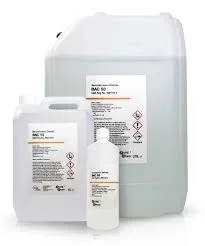coagulation and flocculation in water treatment
Coagulation and Flocculation in Water Treatment
Water treatment processes are essential for ensuring the safety and quality of drinking water. Among the key methods employed in this domain are coagulation and flocculation, which play a crucial role in removing impurities and contaminants from water. Understanding these processes is vital for improving water quality and making it safe for consumption.
Coagulation refers to the process of destabilizing colloidal particles in water, which are often too small to be removed by simple sedimentation. These particles can include dirt, clay, organic matter, and microorganisms. When water is treated, chemicals known as coagulants—most commonly aluminum sulfate or ferric chloride—are added. These coagulants cause the fine particles in the water to bind together, forming larger aggregates or flocs. The addition of coagulants typically occurs at the beginning of the water treatment process, where rapid mixing helps ensure that the chemicals thoroughly interact with the particles.
Following coagulation, the next step in the treatment process is flocculation. This process involves the gentle stirring of water to encourage the growth and aggregation of the flocs formed during coagulation. Flocculation helps to increase the size of the particles, making them heavier and easier to settle out of the water. During this stage, additional chemicals can also be added to enhance the formation of larger flocs. The flocculation process is crucial because it improves the efficiency of subsequent removal steps, such as sedimentation and filtration.
coagulation and flocculation in water treatment

After coagulation and flocculation, the water undergoes sedimentation, where the larger flocs settle to the bottom of a treatment basin, creating a sludge that can be removed
. This is followed by filtration, where any remaining suspended particles are captured by passing the water through layers of sand or other filtration media.The effectiveness of coagulation and flocculation largely depends on several factors, including the type and dosage of coagulants used, the pH level of the water, and the mixing intensity during coagulation and flocculation. Operators must carefully monitor these parameters to optimize the process and ensure maximum removal of impurities.
In conclusion, coagulation and flocculation are critical processes in water treatment that facilitate the removal of contaminants through the aggregation of suspended particles. By transforming fine, unmanageable particles into larger, more easily removable flocs, these techniques significantly enhance the quality of drinking water. As water quality standards continue to evolve, ongoing research and development in these areas remain essential for effective water treatment solutions.
-
Water Treatment with Flocculant Water TreatmentNewsJun.12,2025
-
Polymaleic AnhydrideNewsJun.12,2025
-
Polyaspartic AcidNewsJun.12,2025
-
Enhance Industrial Processes with IsothiazolinonesNewsJun.12,2025
-
Enhance Industrial Processes with PBTCA SolutionsNewsJun.12,2025
-
Dodecyldimethylbenzylammonium Chloride SolutionsNewsJun.12,2025





